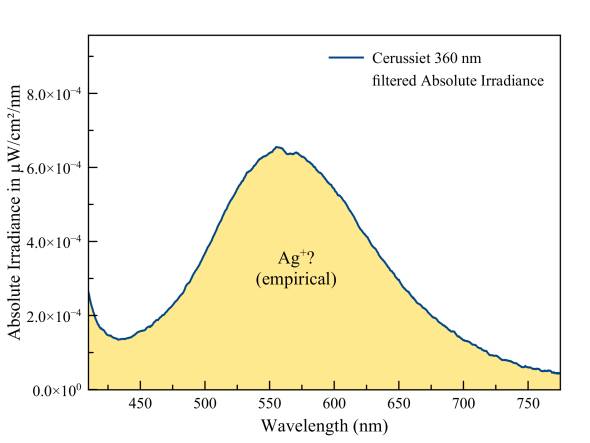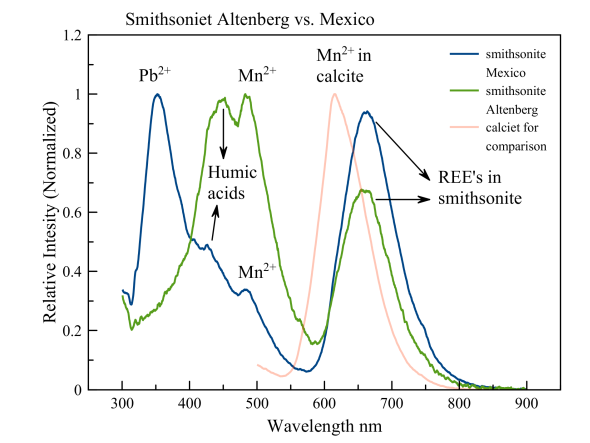
Measured with: Ocean Optics Flame spectrometer, backscattering/reflection probe and an LED light source of 360 nm.
Cerussiet
The yellow fluorescence of cerussite is very similar to that of barite with monovalent silver as activator. So it is thought that silver is the cause, but a direct link is not yet demonstrated. The raw data of this measurement are available for download.
Smithsonite
The red fluorescence of this Belgian smithsonite is visible in SW-UV and the fierce beam of 365 nm UV light from the Convoy S2+ exclusively. It's somewhat redder that the fluorescence of calcite, which I added to the graph for comparison. It is NOT caused by divalent manganese. The fluorescence of manganese replacing zinc in smithsonite peaks at about 500 nm, in the blue region of the visible spectrum. The red fluorescence is caused by rare earth elements, just like in the specimens from Mexico (Potosí Mine, Francisco Portillo, West Camp, Santa Eulalia District,), The differences with the Mexican specimens are: a higher concentration of humic acids and manganese in the Belgian specimen and the absence of lead (lead causes a strong fluorescence in the UV)


